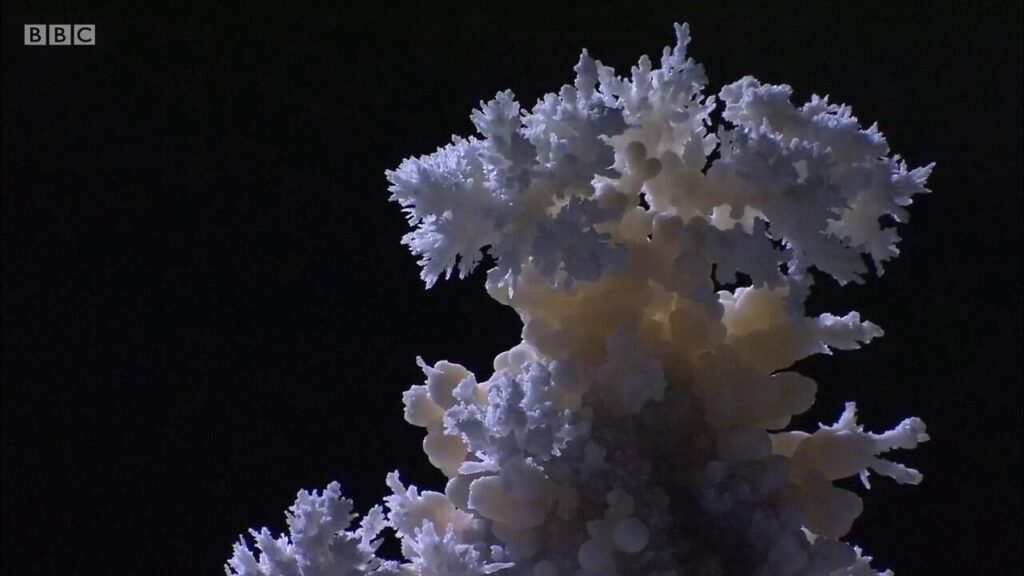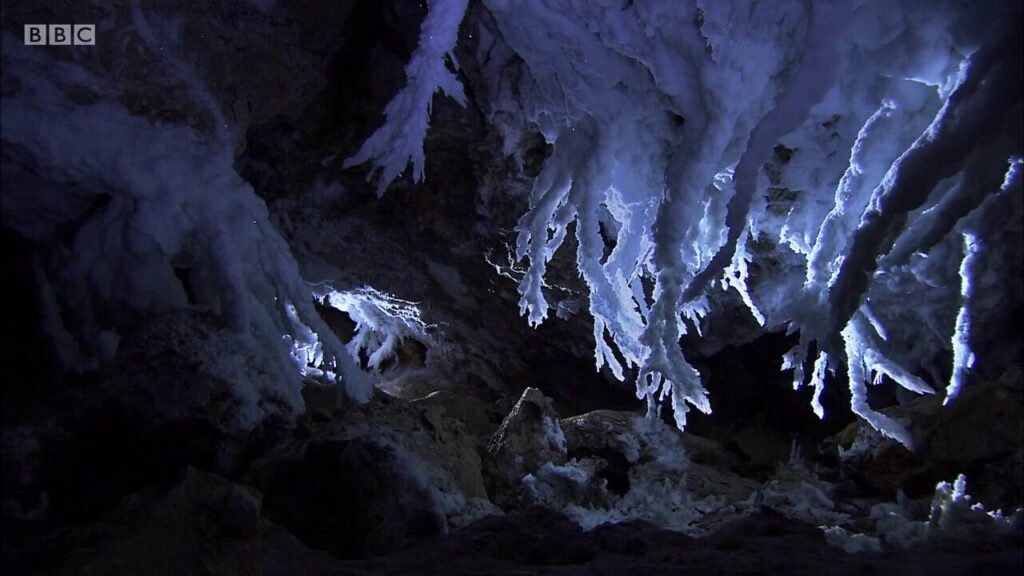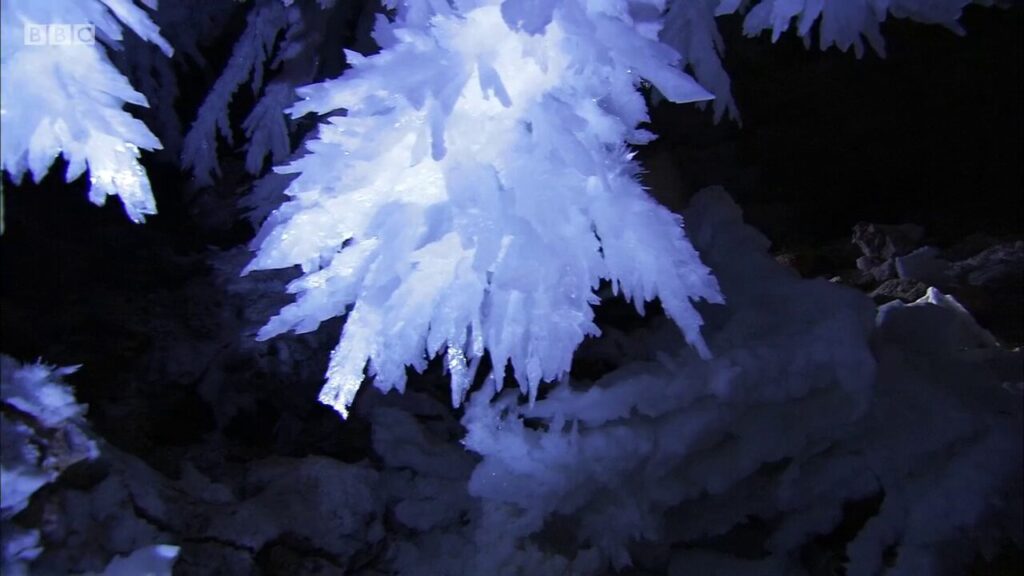Original air date: 26 March 2006

Referring to caves as islands (@34′-38′) it is important to introduce the term ‘biological island‘. It is similar to the general meaning of an island when it comes to animals (and plants) except the organism in question does not need to be isolated on a land mass surrounded by a mass of water. It only needs to be surrounded by ‘medium’ that it cannot cross. In the case of caves an animal (in this case) cannot go to the nearby cave unless they are interconnected. Mountain tops and woodland are biological islands in the same way: an animal may not be able to cover the distance between the mountain tops/ swathes of woodland unless it can fly. This leads to species becoming isolated in these areas evolving into separate species.
A more detailed timeline showing what happened in the programme is below
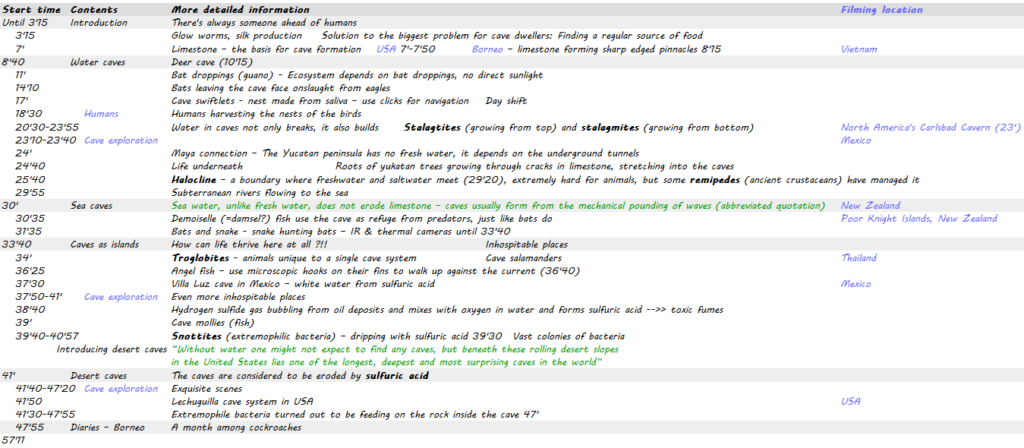
A closer look at the timeline of the programme — as the comments point out there is a lot of cave exploration going on — where human explorers are (possibly in some people’s opinion) too conspicuous. Should natural history not be about nature rather than its exploration? That part is dealt with in its final part (diaries).
Selected material
To show the enormous size of the caves

The best way to show the enormous size is a shot from the bottom and then having a man (human) jumping into the void. Not often are humans acceptable in natural history (@’55-1’05).
A column forming from drops of calcite

Top left: a stalagmite forms from drops of calcite dropping from the overhanging stalactite. On the right there the small stalagmite is right next to a larger one. Bottom there is a column that reaches from top to bottom (fully formed).
These formations come in variety of forms

Another origin of overhangs (39’40-40’40)

A kind of stalactite-like formations that are in fact vast colonies of bacteria known as snottites dripping sulfuric acid so strong it would burn skin. These bacteria are known as extremophiles because they can live in such extreme conditions.
The cave system ‘Lechuguilla’ (42′-48′)
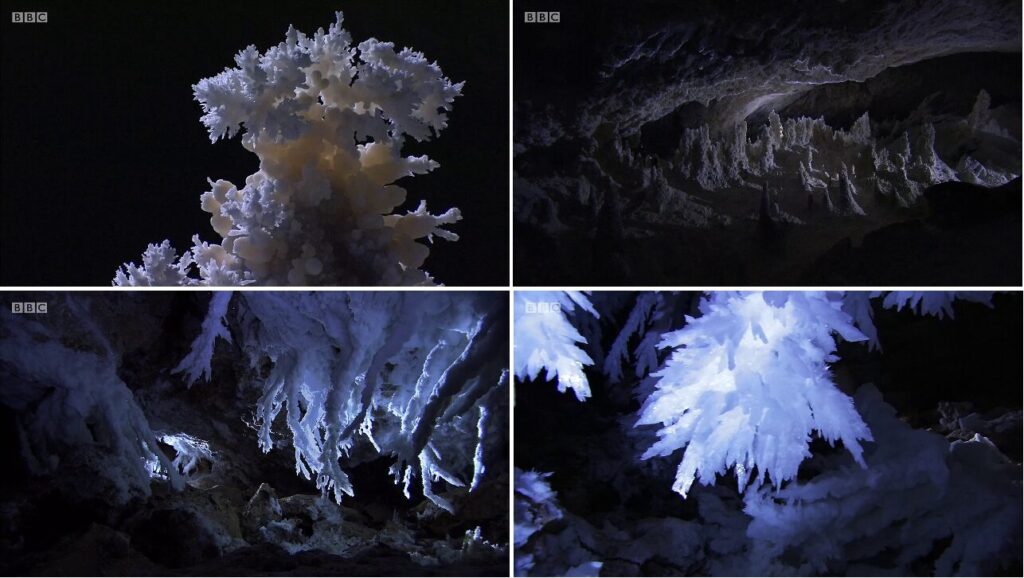
Several snapshots from the amazing ‘Lechuguilla’ cave system that scientists presume has been formed by sulfuric acid eating through limestone, leaving gypsum behind. Snapshots (from top left: 44’33, 44’40, 45’56, 46’10).
The full-size snapshots (from a 720 resolution)
